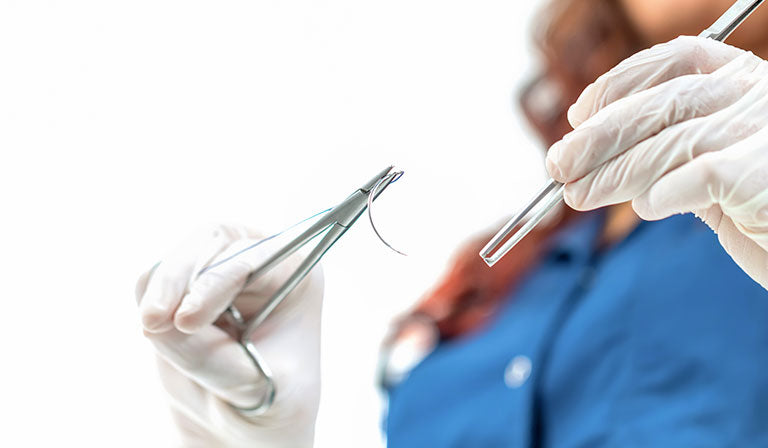

· By Trevor Horne
An Introduction To Pulley Suturing Techniques
The pulley suture technique allows for wound margins to stretch further and is used when extra wound closure strength is required. Pulley suturing techniques depend on the effectiveness of the pulley to distribute tension to close the wound by using many loops of suture. This technique has been proved to enable a considerable reduction of the wound’s defect size and make reconstructive techniques easier. It also allows for serious skin cancer defects of the neck and head to be reconstructed in an environment like a clinic instead of an operating theatre. The pulley technique is an extremely suitable option for large wounds that cannot be closed with side-to-side stitches only, such as on legs or the scalp. This technique can also be used as a temporary measure to improve the approximation of wound edges so that deep stitches can be placed with efficiency and speed. The pulley sutures can always be removed later.
Pulley Suturing Technique
The pulley suturing technique keeps to a far-near-near-far pattern. Below is a step-by-step guide to the pulley suturing technique.
Step 1: (Far) Insert the needle at a perpendicular angle to the surface of the skin. It should be around 8-12mm away from the wound edge.
Step 2: (Near) Rotate the needle through the skin and bring it to the opposite side. Reinsert it from the underside of the skin. The needle should exit around 4mm away from the wound edge.
Step 3: (Near) Insert the needle at a perpendicular angle again from the initial entry side. It should be around 4mm away from the wound edge.
Step 4: (Far) Rotate the needle through the skin and bring it to the opposite side. Reinsert the needle from the underside of the skin. It has to exit 8-12mm away from the wound edge. Then, tie off the suture thread.
Advantages of Pulley Suturing Technique
Passing through the skin tissue repeatedly results in resistance that prevents the suture from slipping. The angled loops of the stitches also have a purpose — the outer and inner loops counterbalance each other out and do not override. By preventing overriding loop sutures, the pulley technique also lessens the possibility and extent of skin damage caused by pressure necrosis. Compared to the interrupted suture, the pulley technique is more advantageous mechanically and having two loops increases friction, preventing the knot from sliding.
Appropriate Choice of Suture Material
Choosing the type of suture material largely relies on where the wound is located. As the pulley suture technique is specifically intended for wounds under significant tension, a 3-0 nonabsorbable suture is recommended for areas like the scalp and back. For areas under extremely marked tension, a 2-0 nonabsorbable suture would be more useful.
Shop for Sutures at ProNorth Medical Corporation
Look no further for medical sutures! ProNorth Medical Corporation stocks a variety of cost-effective, high-quality sutures that are easy to find using our customized filters. We also carry a diverse range of other medical, dental, veterinary products, making us the perfect one-stop destination for your medical needs.
